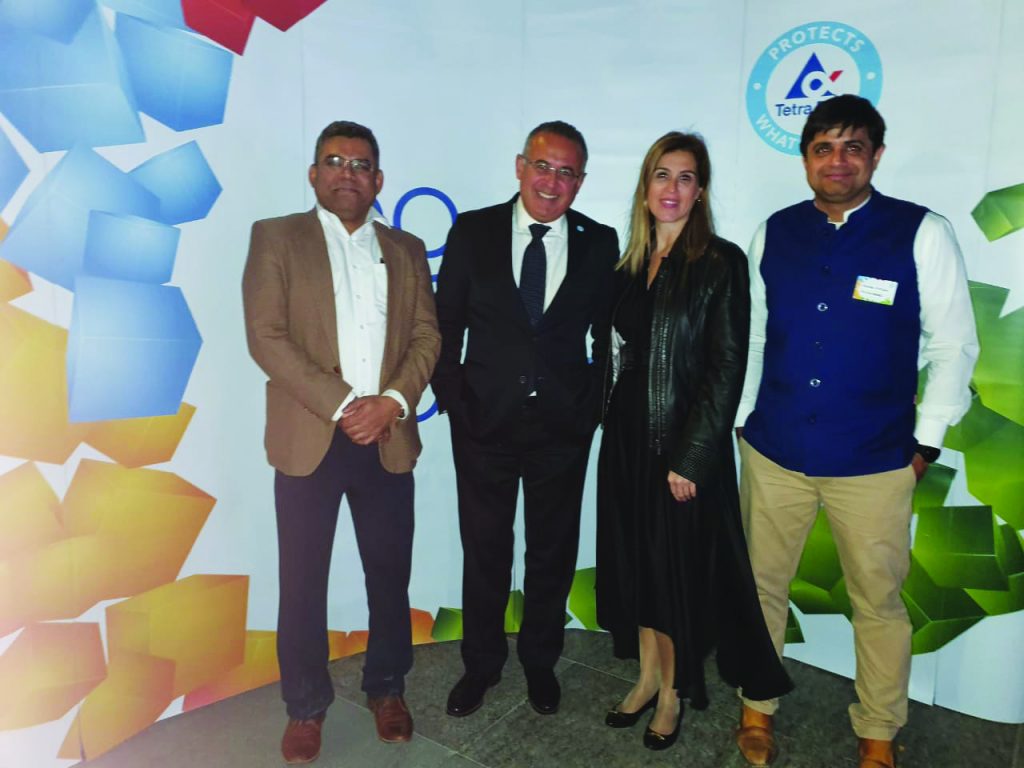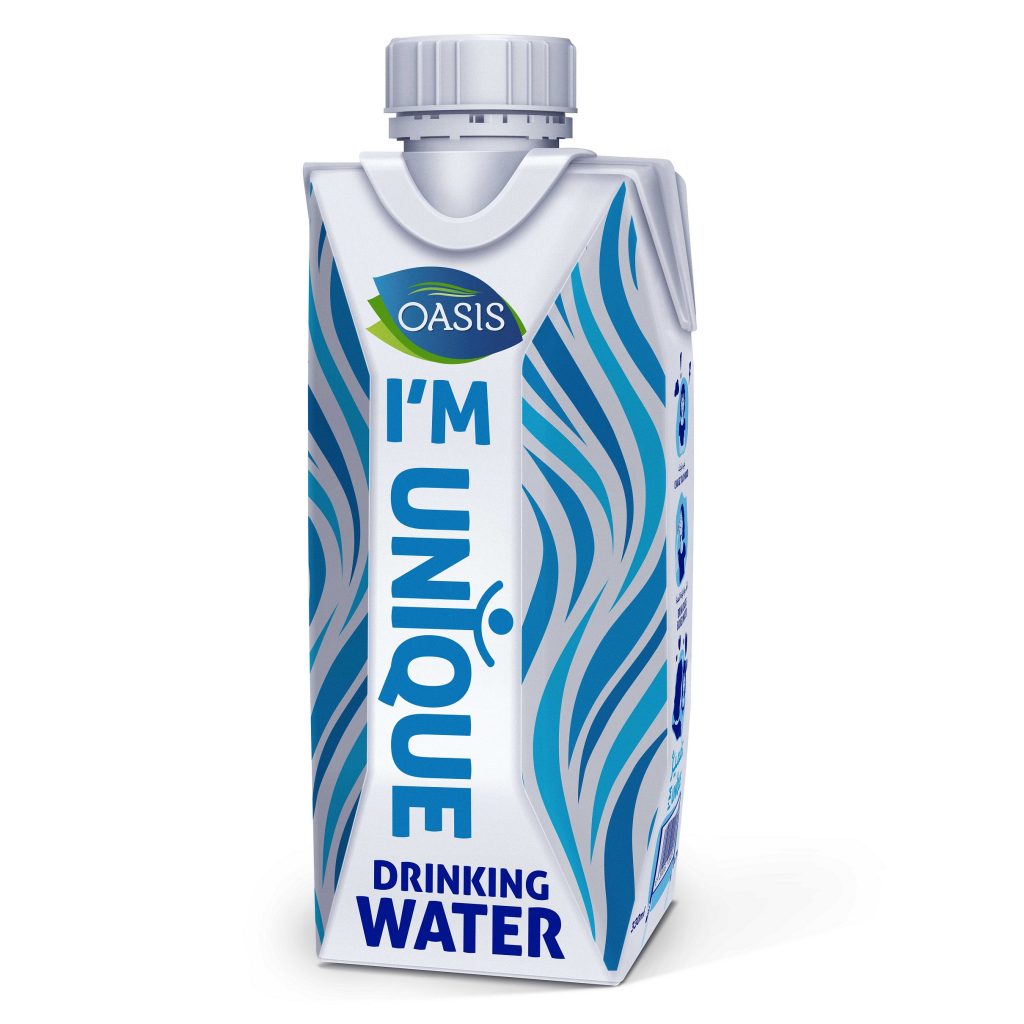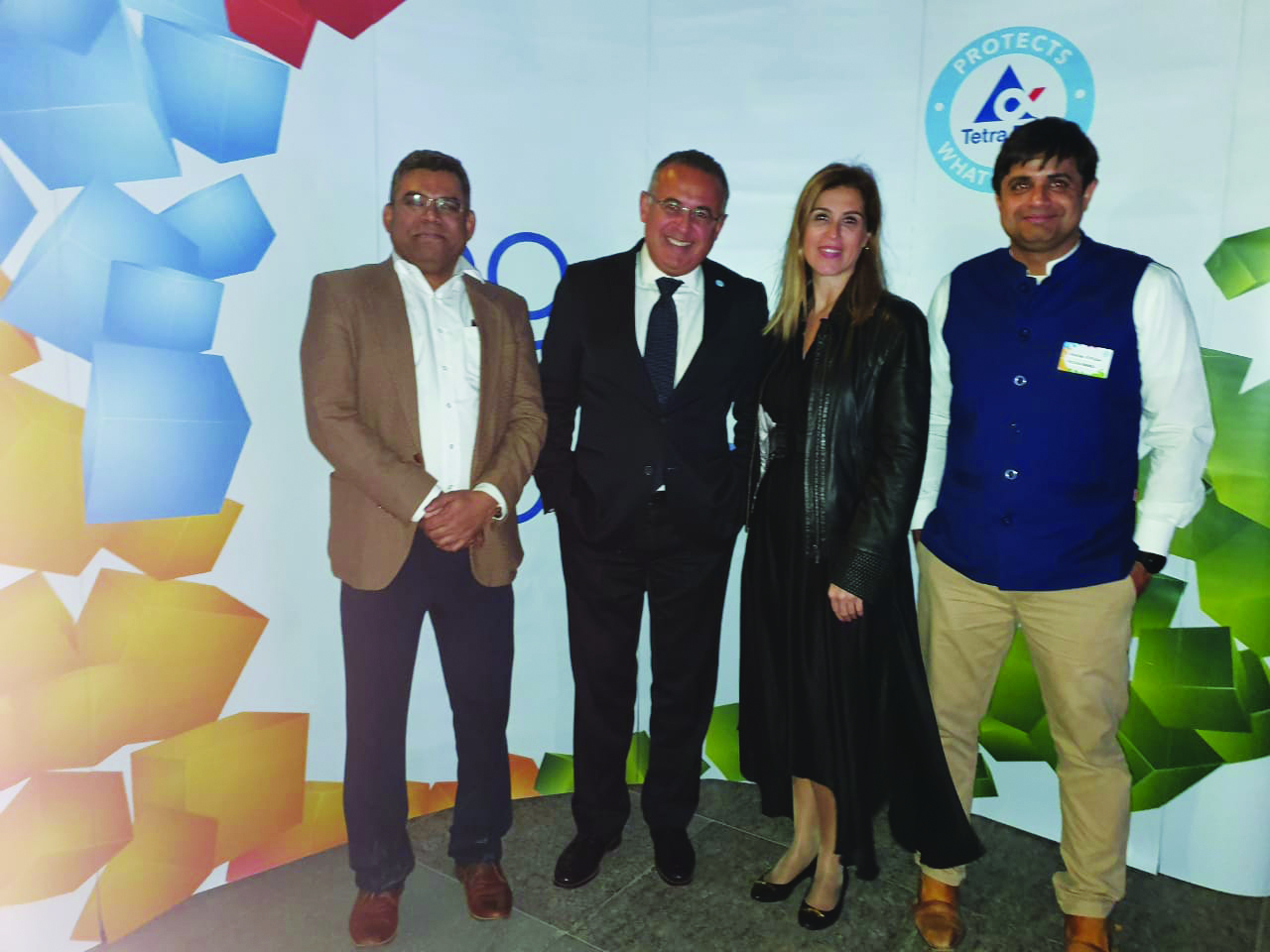PET still rules the drinking water world, but in an increasingly environmentally aware world, Tetra Pak makes the case for cartons.

take over that category”
Tetra Pak, a Switzerland- headquartered multinational food packaging and processing company, is pushing hard for more sustainable alternatives to plastic, especially in this region. As part of this ambition, it has launched a carton-based container for drinking water which promises greater recyclability potential, but at a higher per-unit price to the consumer. How does the company plan to make a success of a product which, for all its environmental credentials, does at the end of the day cost more – a key consideration in a market which is arguably still playing catch-up with much of the wider world when it comes to sustainability considerations.
Packaging MEA Editors Ben Daniel and Vikram Fotedar met with Khaled Ismail, Vice-President, Communications, Europe, Central Asia, Middle East and Africa Region, at the Gulfood 2020 trade show in Dubai to find out more.
Packaging MEA (PMEA): There are different technologies pulling bottled water producers in different directions. There is PET, PLA, PHA and the aseptic board. How do you differentiate these?
Khaled Ismail (K): Various tests over the years found there was migration of taste. We have created something called K Film, which allows the product to retain its integrity, and there is no migration of taste. If a product is on the market, that means we have experienced it, we have tasted it, we made sure it is acceptable in the market.
PMEA: Every product performs differently when it is in a refrigerator versus when it is in a car versus when it is stored outside. Have you studied this?
K: Yes, and we provide this information when we offer a water option in our packages; the benefits of using a carton, especially in this part of the world, as PET may have a negative impact on the taste of the water.

PMEA: Your product is carton- based. Water is predominantly offered in PET bottles. Do you see this changing?
K: It is the consumers who have the option to choose, and the sustainability angle of carton is its driving force. PET ends up in the ocean not by default but by design. People use islands for landfill, thinking they are in the middle of nowhere, beyond where anyone can reach. But [waste] ends up in the ocean that is not designed to dissolve and become part of the nature. Our responsibility is to ensure that whatever is collected is recycled or disposed of responsibly. Different parts of the world treat waste differently based on legislation and availability of land or technology. Our responsibility is to provide the consumers with a package from a renewable source.
It is the consumer who is driving this agenda and they must pressurise us all to ensure recycling. If [recycling] is not beneficial for everyone in the cycle, you will be faced with challenges like landfills. If I throw a PET bottle away in the desert and come back after 300 years, it will still be there. None of us will live to see that, so we need to fix it now, not tomorrow.
Some recyclers prefer virgin fibre or fibre that comes from non-laminate products, because separating involves more effort, energy and technology. We are closely working with many recyclers to overcome this challenge. Collection is independent of this process. We work with municipalities, NGOs, and so on. Countries imposing deposits of carton and PET encourage consumers to use the products and then pro- vide incentives to bring [the packaging] back. In this part of the world, this is one area we need to work on. Recyclability is not just a concept, but a necessity.
PMEA: So, how do you recycle your product?
K: “Little Things In Nature” is a programme we have introduced for schoolchildren. It is a small recycling kit wherein we demon- strate the package put in the pulper and show how it disintegrates the fibre within the package. There are two parts – the paper, plastic and aluminium foil, and the paper that comes out. We also have documentaries, visual aids and infographics which help the viewer to see the entire process.
This technology is globally available. Some of the technologies used around the world are new, while some are different. In Brazil they use the plasma technology. The systems used by the recyclers should be able to direct the material, such as cardboard boxes, tissues, newspapers, magazines, to the right channel to avoid clogging. These materials are recycled to make virgin fibre and create new products. We ensure that separation of layers will not affect their efficiency.
PMEA: For your newest product, the retail cost is AED1.50 for 330ml. Are bottlers interested in this? Because the increase in volume means the price is 50% higher than that of PET bottles. When do you think you can become more competitive with PET from a cost perspective?
K: It’s premium positioning. We have a sustainable package, but it is untested in this part of the world. In the other parts of the world it is widely available but it remains a premium product. There are people who want to contribute to the environment. We haven’t reached a point yet where PET will be replaced, but our ambition is to replace PET for those who can afford it and eventually take over that category.
PMEA: Do you need laminates and multi-layers for water?
K: Tetra top does not have aluminium foil. This package in an aseptic package which does not require refrigeration. If you choose to go without aluminium, there
is tetra top. For us to innovate a package only for water, that category is not big enough to delaminate it and take out the aluminium foil. We are innovating a pack for juice and water which does not have aluminium foil.
PMEA: But that still would have a barrier layer inside. In this case do you think there is a need for a barrier, or can you have a poly-coated board?
K: When it comes to food, the number of tests and approval takes years. This category is emerging. There are tests being done that allows us to invest in this category in the back end, especially in the factory area, to see if there is an opportunity not only to reduce the cost but also the impact.
PMEA: You should be reducing the packaging, not over-packaging. This is over-packaging.
K: I wouldn’t call that over-packaging. This is the technology available today that ensures food safety.
PMEA: In conclusion, please tell us; Does Tetra Pak want to get into non-aseptic boards?
K: Yes, because our technology was built around perishable products like milk and juice. The layer is already there. For us to remove that layer is another technology which will not be very difficult, but is it going to be enough for us to change this for a category that is just emerging. Soon if this is big enough we will have something that will be less costly because of this layer of aluminium foil. We will evolve and we will keep innovating.



